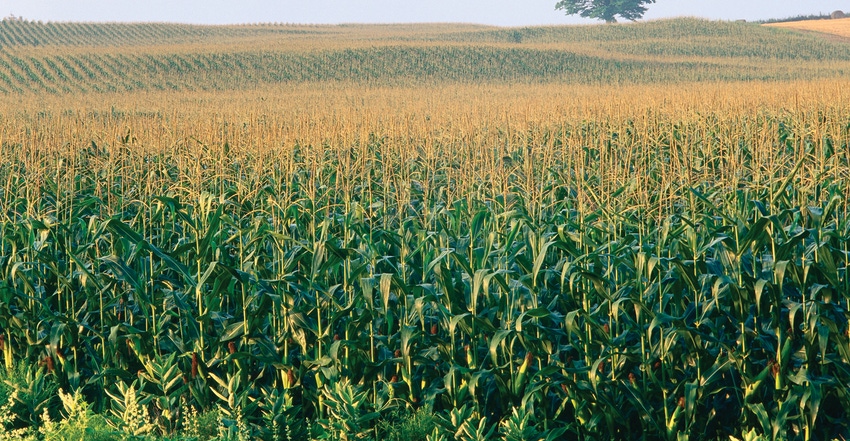January 9, 2019

In 2018, the USDA National Agricultural Statistics Service estimated Ohio’s corn yield at 193 bushels per acre, which would be 16 bushels per acre more than the previous year, and the highest on record if realized. Yields at Ohio Corn Performance Test (OCPT) test sites paralleled the record yields reported across the state in 2018. Averaged across hybrid entries in the early- and full-season tests, yields were 273 bushels per acre in the Southwest/West-Central/Central region, 238 bushels per acre in the Northwest region and 242 bushels per acre in the North-Central/Northeast region. Yields at individual test sites, averaged across hybrid entries in the early- and full-season tests, ranged from 203 bushels per acre at Beloit to 285 bushels per acre at Greenville. Performance data for Upper Sandusky in the Northwest region is not presented due to excessive rainfall shortly after planting, which created variable field conditions that resulted in erratic stands, uneven growth and inconsistent yields.
Here’s a little background on the tests and growing conditions. In 2018, 192 corn hybrids representing 24 commercial brands were evaluated in the OCPT. Four tests were established in the Southwest/West-Central/Central (SW/WC/C) region, and three tests were established in the Northwest (NW) and North-Central/Northeast (NC/NE) regions — for a total of 10 test sites statewide. Hybrid entries in the regional tests were planted in either an early- or a full-season maturity trial. These test sites provided a range of growing conditions and production environments.
Favorable corn growing conditions for most of state
Growing conditions were very favorable for corn production across most of Ohio in 2018. The growing season was characterized by rainfall and heat unit accumulation (growing degree days, or GDD) that were well above average. Precipitation and heat unit accumulation were generally greater at OCPT sites in the SW/WC/C region (with rainfall ranging from 23.3 to 26.3 inches and heat unit accumulation ranging from 3270 to 3520 GDDs) than at sites in the NW and NC/NE regions. Moreover, rainfall was generally well-distributed at these sites. The impact of dry conditions in July and August on crop performance at the Van Wert and Hoytville sites in NW Ohio and the Wooster and Beloit sites in NE/NC Ohio were mitigated by timely rains in late August and September. Due to the warm, wet conditions, foliar diseases (primarily gray leaf spot) and ear rots (primarily gibberella and diplodia ear rots) were present at nearly all test sites. However, the disease severity was highly variable, and it was usually most pronounced for a limited number of hybrids.
The highest-yielding sites were generally associated with foliar fungicide applications at tassel — the major exception being the test site at Bucyrus (the second-highest-yielding OCPT site in 2018), which exhibited little leaf disease or ear rot. Stalk lodging was evident mostly in the NW and NE/NC test sites but negligible for most of the hybrids evaluated. Warm temperatures in August through mid-October promoted crop maturation and drydown, but persistent rains in September through November slowed harvest.
Tables 1 and 2 provide an overview of 2018 hybrid performance in the early-maturity and full-season hybrid trials by region. Averages for grain yield and other measures of agronomic performance are indicated for each region. In addition, the range in regional test site averages is shown in parentheses. See the complete results online at the Ohio State University corn trials website.

As farmers review 2018 test results, researchers say it’s important to keep the following in mind. Confidence in test results increases with the number of years and the number of locations in which the hybrid was tested. Avoid selecting a hybrid based on data from a single test site, especially if the site was characterized by abnormal growing conditions. Look for consistency in a hybrid’s performance across a range of environmental conditions. Consider the table providing a “Combined regional summary of hybrid performance,” which indicates the performance of hybrids common to nine statewide test sites and the six tests in western Ohio. Differences in grain moisture percentages among hybrids at harvest can provide a basis for comparing hybrid maturity. Yield, percentage of stalk lodging, grain moisture and other comparisons should be made among hybrids of similar maturity to determine those best adapted to your farm.
Source: Regional overviews by Rich Minyo, Allen Geyer, David Lohnes and Peter Thomison, Ohio Corn Performance, Ohio Agricultural Research and Development Center Library/Ohio State University, which is solely responsible for the information provided and is wholly owned by the source. Informa Business Media and all its subsidiaries are not responsible for any of the content contained in this information asset.
You May Also Like




